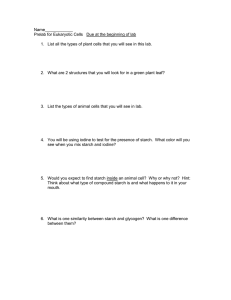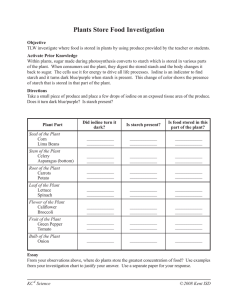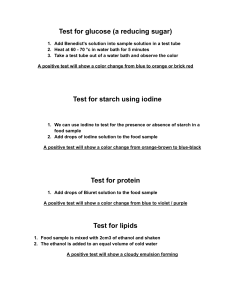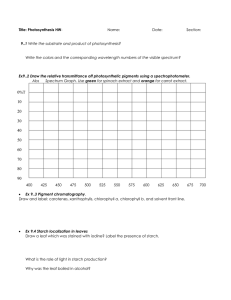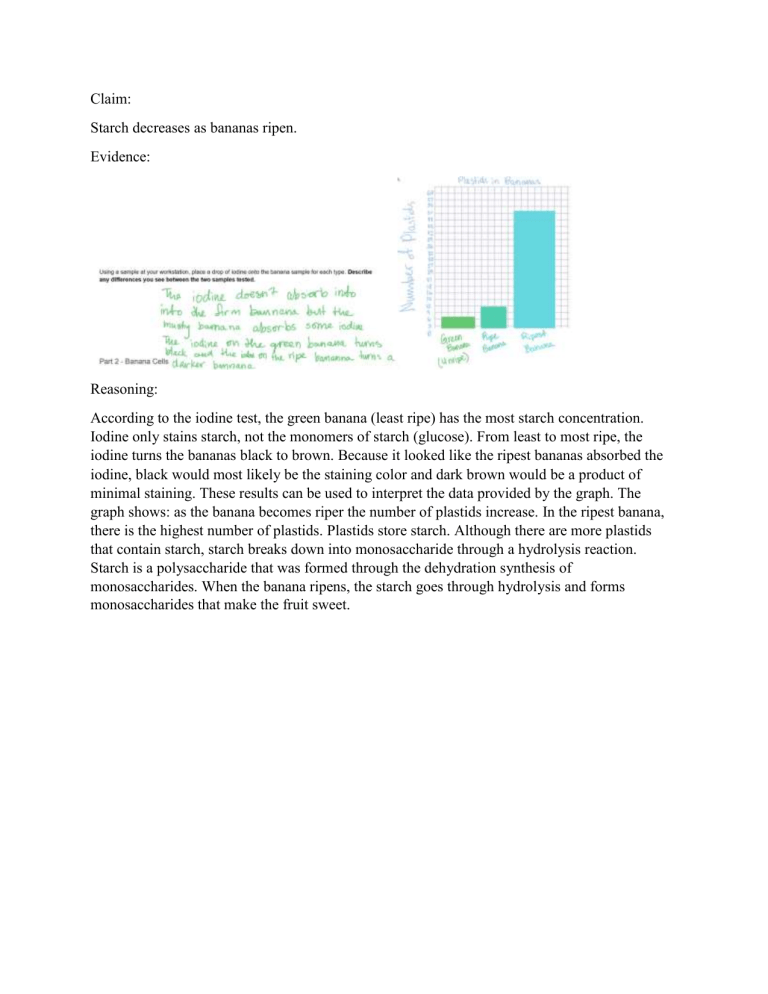
Claim: Starch decreases as bananas ripen. Evidence: Reasoning: According to the iodine test, the green banana (least ripe) has the most starch concentration. Iodine only stains starch, not the monomers of starch (glucose). From least to most ripe, the iodine turns the bananas black to brown. Because it looked like the ripest bananas absorbed the iodine, black would most likely be the staining color and dark brown would be a product of minimal staining. These results can be used to interpret the data provided by the graph. The graph shows: as the banana becomes riper the number of plastids increase. In the ripest banana, there is the highest number of plastids. Plastids store starch. Although there are more plastids that contain starch, starch breaks down into monosaccharide through a hydrolysis reaction. Starch is a polysaccharide that was formed through the dehydration synthesis of monosaccharides. When the banana ripens, the starch goes through hydrolysis and forms monosaccharides that make the fruit sweet.
